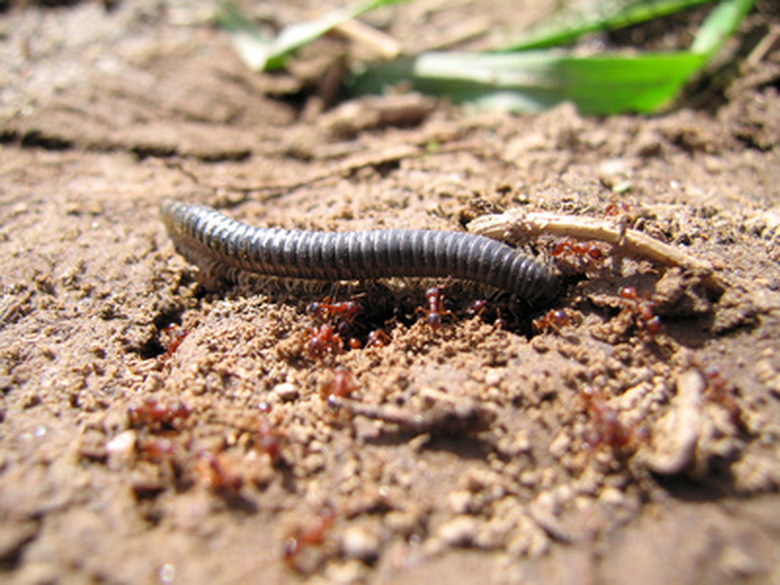Braided Ficus & Centipede
If you find centipedes near or on your braided ficus trees, you are witnessing a more complex issue than a mere pest infestation. Among the many pests of the ficus tree, centipedes are not on the list. Centipedes feed on other animals, not on plant material, according to the North Dakota State University Extension. Their presence is likely due to an underlying pest issue by an insect infestation already underway on your ficus.
Identification
Weeping figs (Ficus benjamina) are often referred to as braided ficus trees. Due to the malleable nature of their stems, a braided trunk is an option with stems that eventually fuse together to form a single trunk, according to the University of Arkansas Cooperative Extension Service.
Centipedes are typically brown in color with long, flat bodies that measure over 1 inch in length, according to the University of California IPM Online. Though their name suggests they display 100 legs, these arthropods generally have 30 legs with one pair present on each portion of their bodies. Verify that your tree is a ficus and that the arthropods present are centipedes for accurate treatment.
- If you find centipedes near or on your braided ficus trees, you are witnessing a more complex issue than a mere pest infestation.
- Due to the malleable nature of their stems, a braided trunk is an option with stems that eventually fuse together to form a single trunk, according to the University of Arkansas Cooperative Extension Service.
Misconceptions
The home gardener often assumes that the presence of centipedes in conjunction with damage to trees or surrounding plants is a centipede problem. However, centipedes consume animals instead of plants, the University of Arkansas Cooperative Extension Service explains. If you notice centipedes near your braided ficus, your tree is likely infested with common invasive insect pests or you planted your tree in contaminated soil.
Types
Though you may feel centipedes on or near your braided ficus are a nuisance, consider them a friendly warning. They benefit your garden by eating insect pests and by letting you know your braided ficus is in danger. Observe your braided ficus for common pests like scales or thrips that suck fluids from tree tissue, leading to decline. Also look for whiteflies and mealybugs, according to the University of California IPM Online. If you find pests on your tree that match the description of these common pests, establish a biological or chemical control method immediately to prevent the decline of your ficus. Contact your local county extension agent or a licensed professional for assistance.
- The home gardener often assumes that the presence of centipedes in conjunction with damage to trees or surrounding plants is a centipede problem.
- If you find pests on your tree that match the description of these common pests, establish a biological or chemical control method immediately to prevent the decline of your ficus.
Considerations
Provide consistent, appropriate care to your braided ficus tree to prevent insect infestations that attract centipedes to the yard. Always purchase pasteurized soil when growing a new plant to prevent utilizing soil already rife with insects or disease. Grow your braided ficus in areas that offer full sun to partial shade in well-drained soil, according to the University of Florida IFAS Extension.
Warning
If centipedes have roamed into your home, they are simply looking for damp areas and insects as food, according to the University of California IPM Online. Practice caution as some centipedes may bite and cause a painful, localized reaction. Attempt to increase air circulation in moist areas and create a control program for the other pests that are likely hiding in your home. For chemical control, contact your local professional pest control company.
- Provide consistent, appropriate care to your braided ficus tree to prevent insect infestations that attract centipedes to the yard.
- Attempt to increase air circulation in moist areas and create a control program for the other pests that are likely hiding in your home.
